Administration
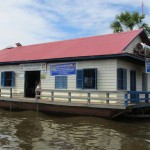
Cambodia’s sub-national administration consists of three tiers: capital city/province, municipality/district and sangkat/commune. Phnom Penh is the capital, and there are 24 provinces, 159 districts (including 26 municipalities and 12 khans), 1406 communes and 227 sangkats. ...
Non-renewable energy production
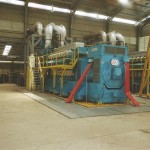
Non-renewable energy sources are chiefly fossil fuels such as coal, diesel, oil and gas. They provide most of Cambodia’s locally-produced electrical supply – in 2011 diesel and heavy fuel oil generators provided 89% of local electricity generation. ...
Development and assistance for land tenure and land titling
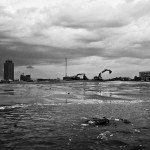
Beginning in 2002, the World Bank, Germany, Finland and Canada began a joint-program to promote land tenure security in Cambodia by providing financial and technical support to land titling efforts. Following the eviction of residents of the Boeung Kak Lake area of Phnom Penh due ...
Communal land

Though there are multiple forms of communal property, the rights associated with indigenous communal property are subject to significant legal and socio-economic issues. Indigenous communities are culturally very different from the rest of Cambodia, and the law provides them with the opportunity to obtain collective ...
Legal aid policy and regulation

Public policies are a system of laws, regulatory measures, and plans of action implemented by the government to ensure that its functions are performed predictably and consistently.1 Policies typically outline the guiding principles of an operation; meanwhile, regulations set procedural expectations. Currently, there are no ...
Cooking fuel
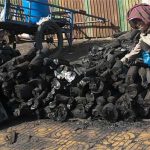
Firewood and charcoal are the main sources of energy for households and many small and medium enterprises, such as brick and tile industries. The cooking fuels used in Cambodia have changed greatly in the last decade. The National Census 2008 showed that 91 percent of ...
Taxation
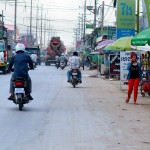
Heavy trucks on a street in Phnom Penh, Cambodia. Photo by Phalinn Ool, taken on June 15 2015. Licensed under CC BY-NC-ND 2.0The Cambodian government’s 2014–18 Revenue Mobilization Strategy aimed to enhance revenue administration and strongly increase the collection of taxes and other revenue. The ...
Terms and definitions
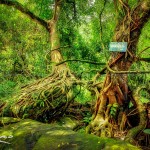
Defining and measuring forests is not an easy business. Definitions that initially sound very similar can turn out to have crucial differences. Understanding the terms is important for understanding forest use, forest cover, forest laws and policies and deforestation. ...
Types of state-protected areas
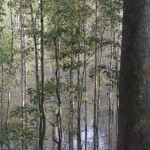
Flooded forest in Cambodia. Photo by Andrea Kirkby, taken 11 May 2014. Licensed under CC BY-NC 2.0.A 1993 royal decree designated 23 protected areas covering about 3,273,300 ha, equal to around 18% of the country’s total land area, and brought them under the jurisdiction of the Ministry ...
Adaptation
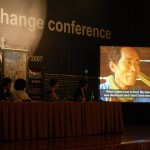
UN’s Bali Climate Change Conference. Photo by Oxfam International, taken on 4 December 2007. Licensed under CC BY-NC-ND 2.0Climate change is a continuing problem. In Southeast Asia, Cambodia is one of the countries that is most affected and underprepared. As it is a developing country, ...
Civil and commercial litigation
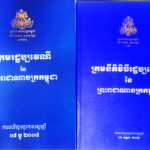
Since 1993, the Royal Government of Cambodia (RGC) has been working to reform the country’s legal framework, and in particular the application of justice, to provide a clear and fixed procedural system to ensure respect for individual rights and equality before the courts.90 In theory, ...
SDG 15 Life on land
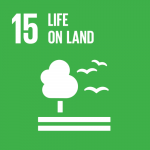
SDG 15 focuses on the sustainable use of terrestrial (land-based) biodiversity and ecosystems such as forests, grasslands, deserts and mountains and their interaction with freshwater systems. It aims to protect and restore their ecological function. The work includes applying sustainable land and forest management practices and ...
Fish farming and aquaculture
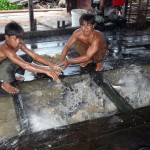
Fish farmers operating cage culture, Cambodia. Photo by O. Joffre/WorldFish, taken on 3 October 2009. Licensed under CC BY-NC-ND 2.0.Aquaculture production has grown significantly. In 2012 it stood at 74,000 tonnes, or almost 11 percent of total fishery production. By 2016 it had grown to ...
Community fisheries
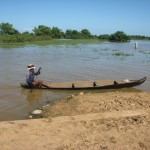
Community fishery refuges, Battambang, Cambodia. Photo by Alan Brooks/WorldFish, taken on 2 November 2011. Licensed under CC BY-NC-ND 2.0.Fishing practices in Cambodia are classified into three broad categories: small-scale or family fishing, medium-scale and large-scale or commercial fishing.In 2001, aware of the need to safeguard ...
Legal aid providers

Legal aid is provided either by the Bar Association of the Kingdom of Cambodia (BAKC), internationally funded Non-Governmental Organizations (NGOs) and public interest law firms. A special legal team under the supervision of the Prime Minister, aiming to assist impoverished women, particularly those in prison, ...
Gravel and limestone
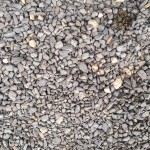
Raw gravel, photo by touch and see, taken on March 26, 2014. Licensed under: CC BY-SA 2.0Since 2010, Cambodia has seen increasing production of cement, crushed stone, sand and gravel in response to the country’s booming construction sector. Approved investment in the construction industry in ...
Water pollution
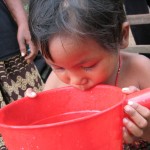
Young child drinks clean water in Cambodia. Photo by Cecilia Snyder, taken on 12 July 2003. Licensed under CC BY-NC-ND 2.0Water pollution can be defined in many different ways. Basically, it is the contamination of water when pollutants are discharged into water bodies without treatment ...
Energy policy and administration
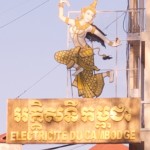
Electricite du Cambodge (EdC). Photo by bmeabroad, taken on 10 November 2011. Licensed under CC BY-NC-SA 2.0.Low electrification rates and over-dependence on fossil fuel imports have contributed to Cambodia ranking 120 out of 124 nations in the new World Economic Forum’s Global Energy Architecture Performance Index ...
Forest classifications
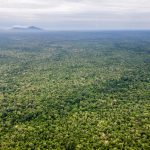
The classification of forests is set out in the Law on Forestry 2002. The law applies to both natural forests and plantations, and “defines the framework for management, harvesting, use, development and conservation of the forests in the Kingdom of Cambodia. The objective of this ...
Oil refineries
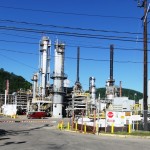
There is currently no oils refinery in Cambodia. Although a refinery has been planned, its construction has been delayed several times, reportedly over financing difficulties. ...



